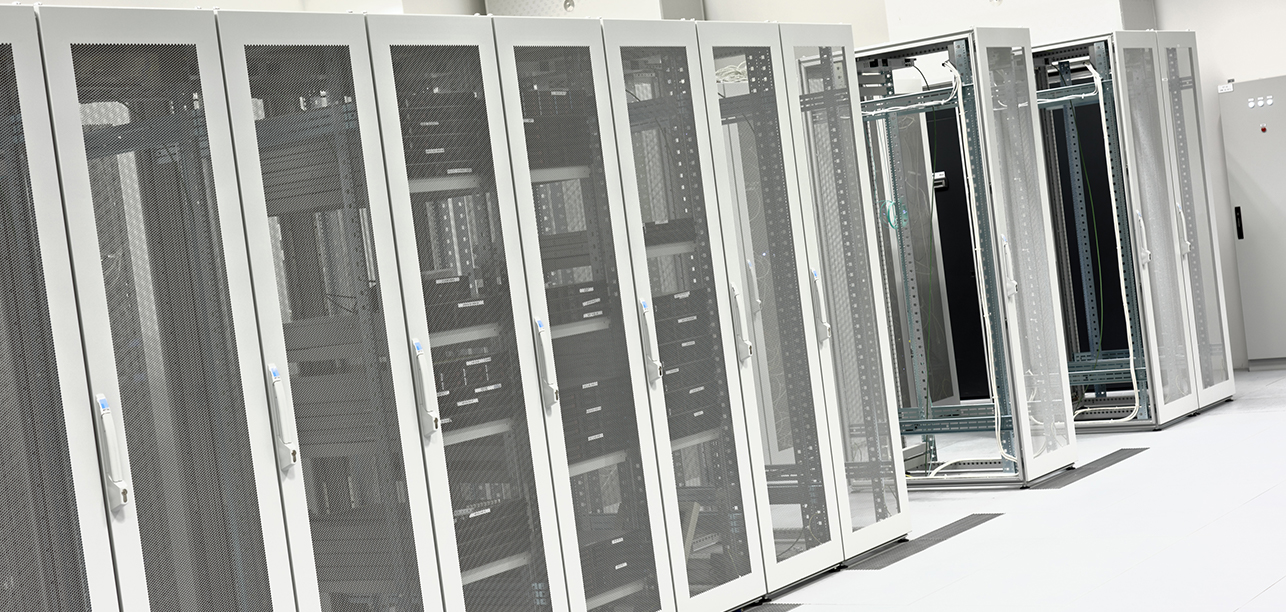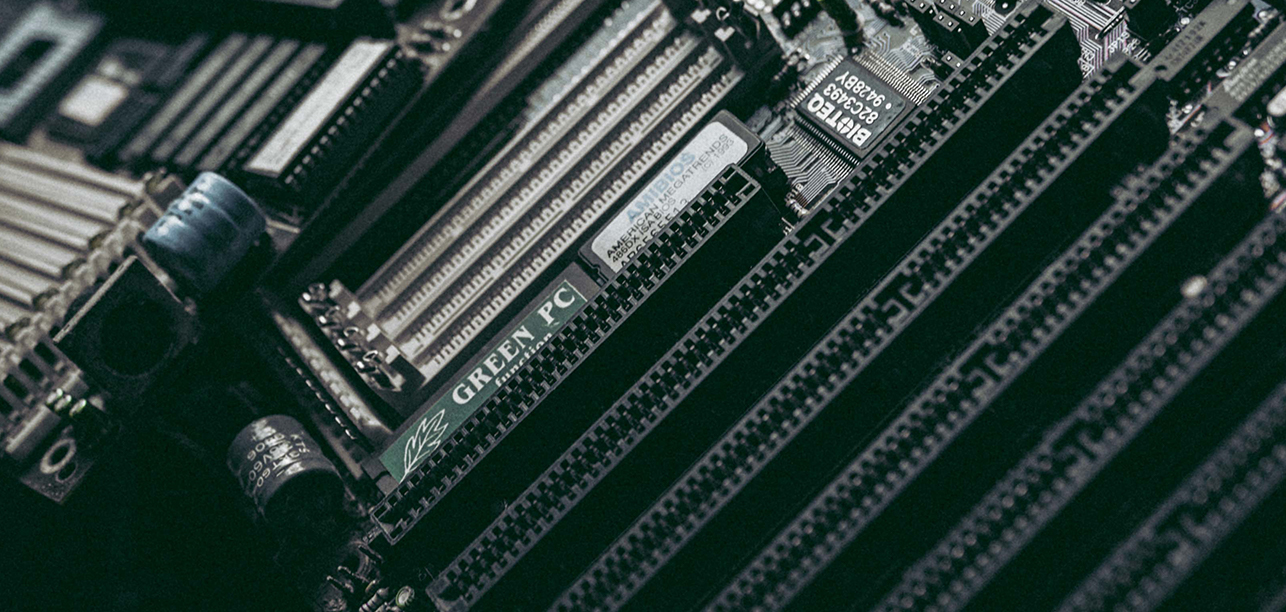Month: January 2015

When evaluating colocation services, choosing a scalable data center that can support your expanding business infrastructure should be one of your most important criteria. But since most of us can’t predict the future, how do we prepare for the colocation needs we’ll have several years from now?
Even without a crystal ball, we know one thing is certain about tomorrow’s data centers: they will require more power. While servers and storage devices may be getting physically smaller, the amount of power they need is actually increasing. As more businesses incorporate big data and online analytics into their corporate strategy, the infrastructure to support this will require more power in a few years than it does today. Across our Internap data centers, power draw has increased 40% in the past two years alone.
How can you be sure a colocation provider can meet the growing power demands of your business? Here are three factors to look for when evaluating scalable data centers.
High power density
Choosing a data center designed for high power density is key to ensuring scalability for your colocation footprint. High-density facilities allow you to add more power on demand, including additional circuits to support your growth. Without the ability to add more power circuits to an installed footprint or access additional power, you will likely need to migrate your infrastructure to a different facility in the future.
Sustainable data center design
While the term “green” data center was once used to describe facilities with lower environmental impact, this concept has been further quantified by third-party organizations to give buyers detailed information on data center energy usage and sustainable design techniques. Certifications such as Green Globes®, LEED and ENERGY STAR provide criteria for colocation customers who are comparing data center efficiency.
Efficient power usage
Data centers designed to efficiently use power will ultimately offer the most cost-efficient option. With the rise in power usage, efficient cooling methods are becoming more important to maintain reasonable temperatures. Look for facilities with energy-efficient Computer Room Air Conditioning (CRAC) units and even the ability to use outside air exchangers in cooler climates. Data center efficiency can lead to economical operating costs which can reduce your long-term investment.
Explore HorizonIQ
Bare Metal
LEARN MORE
Stay Connected

News roundup: IPv6 is crucial for the future of networking and IoT
With the growth of Internet of Things (IoT) technology and new approaches to data privacy and network security, IPv6 adoption will become a popular topic in the year ahead. We’ve put together a collection of articles to keep you updated on recent IPv6 news.
Why isn’t IPv6 Taking Off?
While there are several legitimate reasons why IT organizations are not rushing to adopt IPv6, change is coming sooner rather than later, and businesses need to be prepared. Over the next few years, millions of routers will hit their physical limits due to IPv4 de-aggregation and IPv6 adoption, and companies will be faced with spending enormous amounts of money to move to next-generation platforms. Read original article here.
Making a Strong Case for IPv6
For IT professionals trying to convince their organizations to prepare for IPv6, this article by John Curran, President and CEO of the American Registry for Internet Numbers (ARIN), outlines three straightforward points to show the benefits of adoption. Strategic planning by IT and business leaders will ensure a future-proof network infrastructure with optimal website performance to support the increasing number of mobile users, and provide access to complete analytics for business decision making. Read original article here.
UK Regulator Sets Out Priorities For Growing The Internet Of Things
Earlier this week, the U.K. telecommunications regulator Ofcom outlined four areas of focus that need to be addressed in order to foster growth for IoT technology. Data privacy and network security were identified as top priorities to address consumer mistrust. Along with secure networking and data storage, IPv6 will become increasingly important to the development of the IoT since it can support connections between a greater number of devices. Read original article here.
Networking in 2015: Will IPv6 be an Issue?
With the increasing adoption of public, private and hybrid cloud solutions, managing distributed networking policy across different deployment types will become more challenging for network administrators. Several vendors are getting involved with policy management, and VMware is leading the OpenStack Congress project to establish a simpler policy language and environment for management of distributed network policy. In addition to policy, IT leaders must also address increasing IPv6 usage and plan how to support it within their organization. Read original article here.
Explore HorizonIQ
Bare Metal
LEARN MORE
Stay Connected

The value of big data continues to gain momentum for enterprises across a variety of industries, and the world of digital marketing is no exception. The ability to extract actionable business insights from large data streams is fast becoming the most powerful tool for marketers to connect and engage with prospects and customers.
As the leading independent data platform, eXelate is empowering marketers to leverage the value of data for the digital advertising industry. Through their research and development advancements, as well as industry partnerships, eXelate has forged ahead to the sweet spot where marketing, big data, and technology overlap.
eXelate’s annual Big Data eXposed event offers insight into the architecture that powers big data innovation and provides a forum for entrepreneurs and industry leaders to share their expertise and shape the future of online data analytics.
The infrastructure driving big data
In order to effectively leverage data for better insights and increased revenue, the eXelate solution relies on high-performance infrastructure designed with the needs of big data in mind. The ability to extract, analyze, and load massive amounts of information and transform it into meaningful, actionable insights requires a scalable IT infrastructure and database platform with consistent compute, storage, and networking capabilities.
Price performance considerations
Traditional virtual public cloud solutions are not able to provide the high levels of throughput and processing power required by eXelate. To run big data workloads cost-effectively while still achieving optimal performance, eXelate uses a combined solution from HorizonIQ and Aerospike to quickly deploy high-performance applications and get the best price-to-performance ratio. HorizonIQ bare-metal servers and Aerospike NoSQL databases provide a scalable, on-demand platform that enables eXelate to make big data actionable for its global customer base.
As the influence of big data on digital marketing continues to grow, the underlying technology behind online data analytics will become increasingly important. eXelate and its partners remain committed to software and architecture innovations that can empower marketers to increase revenue and improve customer engagement.
Explore HorizonIQ
Bare Metal
LEARN MORE
Stay Connected

 The Internet of Things (IoT) is the next big technology wave that will change the Internet as we know it. It’s here to stay, and soon we’ll be surrounded by connected devices, all gathering data and talking to one another. At the recent Consumer Electronics Show, most new devices were IoT-centric. But no one wants to be covered in wearable sensors, so before the IoT can fully flourish, several aspects must be fleshed out.
The Internet of Things (IoT) is the next big technology wave that will change the Internet as we know it. It’s here to stay, and soon we’ll be surrounded by connected devices, all gathering data and talking to one another. At the recent Consumer Electronics Show, most new devices were IoT-centric. But no one wants to be covered in wearable sensors, so before the IoT can fully flourish, several aspects must be fleshed out.
Here are a few recent articles to keep you updated on fresh IoT news perspectives.
The Internet of Things has four big data problems
As witnessed at CES, the sheer number of wearable, connected devices is overwhelming; as stated in the article, “no one will wear 50 devices.” In order to move forward successfully, the industry needs to consider the big data aspects that go hand in hand with IoT. The biggest first movers will be those who win the war over data contention, not those who innundate the market with sensor-filled wearables that collect data in isolation.
Data privacy isn’t dead with the internet of things, just different
The IoT will force us to define privacy differently than we do today. While it’s not realistic to prevent companies from collecting data, there should still be controls on what happens to the data once it’s collected. The new reality will also raise questions about how lawmakers and governments should proactively address these privacy issues. Watch a panel discussion from the GigaOm Structure Connect 2014 event that includes speakers from xChanging, ACLU and The White House.
Certainties in 2015: Death, Taxes and the New World of IoT
Along with the certainty that IoT will impact many aspects of our daily lives, we must also consider the underlying network infrastructure required to support connected devices and their data. The prospect of failure at the infrastructure level could have disastrous effects for industries such as security or health care. Companies that successfully design and build an IoT-ready network will be better equipped to handle the challenges that lie ahead, from DNS to security and scalability.
CES 2015: AllSeen Alliance to bring order to the Internet of Things
You may have noticed something missing from the new IoT devices presented at CES 2015: the lack of standards regarding security, control and management of the devices and the personal data they collect. The AllSeen Alliance is a cross-industry group that plans to solve this problem, and is already making code available for use today. Creating standards for interoperability will set parameters for how the IoT will evolve, and these standards will subsequently shape and define the industry’s future.
Explore HorizonIQ
Bare Metal
LEARN MORE
Stay Connected

While data center power draw has traditionally grown on a slow and steady course, in the past year, HorizonIQ has seen rapid growth in watts per square foot of actual power consumption. This upward trend marks a significant change and demonstrates the importance of scalable power density for our customers.
During the past two years, data center power consumption has begun increasing at a much faster rate than before. Across our HorizonIQ data centers, average actual power draw per square foot has gone up 40% since January 2013, and we’ve seen a 30% increase in the past year alone. Several locations are markedly higher. It’s no surprise to see top markets like Dallas (up 100% in 2 years), New York (up 56%) and Silicon Valley (up 40%) lead the trend.
There’s never a good time to discover that you can’t add more power circuits
During the evaluation process, buyers need to consider what their power usage needs are today, and what they will be in the future. Over time, a growing business will require more power than it does today, and the data center should be equipped to handle this growth. When infrastructure requires more power down the road, facilities with fixed power densities will become problems.
Facilities designed to support higher power densities allow your business to scale more efficiently and with fewer headaches. Do your due diligence before entering into a colocation contract to avoid the disruption and expense of migrating your infrastructure to another data center later. Keep in mind that the colocation ‘deal’ you get today could turn into a nightmare in the future if your data center doesn’t have scalable density to power your growth.
Learn more about the essential design elements of high power density data centers.
Explore HorizonIQ
Bare Metal
LEARN MORE
Stay Connected

Location is everything when it comes to data center site selection. But finding the best-suited location requires careful planning, along with assistance from an experienced data center real estate team.
Internap partnered with Cushman & Wakefield to select the location of our Secaucus, NJ data center. While proximity to fiber and transit are clearly a fundamental requirement for data center facilities, let’s take a look at some other factors to consider for data center site selection.
Data center power supply
Power supply can make or break your data center site selection. The location of Internap’s Secaucus, NJ facility had an existing 3MW of power to the building, with an additional 20-25MW available from another connected substation. This second power supply allows Internap to meet customer demands for increased power density and capacity in the future. In some cases, additional substations and power lines must be built to generate enough power for the facility. To accomplish this, the data center real estate team must have a close working relationship with local government and utility providers.
Community buy-in
Making sure local owners will be receptive to a data center facility in their market is extremely important. Even if your chosen site meets all other criteria on your checklist, lack of support from the community can derail the project completely. Last year, a large data center project in Delaware was cancelled as a result of resident opposition to the proposed power plant that would support the new facility. Currently, Amazon plans to build a new substation and transmission line in Virginia, but local politicians, business owners and residents are opposed to the plan.
Weather resistance
While mother nature is unpredictable, selecting a location that is better prepared for natural disasters is important. Internap’s Secaucus facility in northern New Jersey is located outside the 500-year flood plain, which is the highest elevation possible for a property in that area. This is especially attractive to colocation buyers seeking highly resilient and reliable facilities. Another example is Internap’s Houston data center, which is built to withstand extreme weather events and is a 200 mph wind-rated building.
Explore HorizonIQ
Bare Metal
LEARN MORE
Stay Connected

When building your big data infrastructure, price performance is a critical factor to evaluate. Data-intensive workloads with the capacity to rapidly scale to hundreds of servers can escalate costs beyond your expectations. The inevitable growth of the Internet of Things (IoT) and fast big data will only lead to larger datasets, and a high-performance infrastructure and database platform will be essential to extracting business value while keeping costs under control.
Benchmarking SQL on bare metal vs. virtual cloud
Performance metrics should be evaluated in terms of overall cost. To demonstrate this, Internap and ParStream have conducted benchmark tests comparing ParStream real-time analytics SQL databases on bare metal and virtualized public cloud. While the latest SQL databases have been created specifically for cloud, there are significant performance advantages of running these databases on bare metal.
Certain industries, such as advertising technology and online data analytics, require ultra-low latency in order to extract, analyze and process large amounts of data in real time. Because of this requirement, query response time is a vital metric for this type of big data infrastructure. Benchmark tests confirm that running the ParStream SQL database on Internap’s bare metal Infrastructure-as-a-Service (IaaS) delivered substantial benefits when compared to AWS EC2.
Price-performance advantages
Bare-metal cloud offers a high-performance, cost-efficient alternative to virtual cloud solutions. While many data-intensive applications begin in virtual cloud environments, increased volatility and inconsistent performance can become problematic as the business expands and scales. Bare metal offers organizations the flexibility and control of the cloud without the “noisy neighbor” problem inherent in multi-tenant virtual cloud environments. The dedicated CPU, RAM and disk I/O of bare metal IaaS provide a cost-effective way to achieve the high-performance requirements of big data infrastructure.


